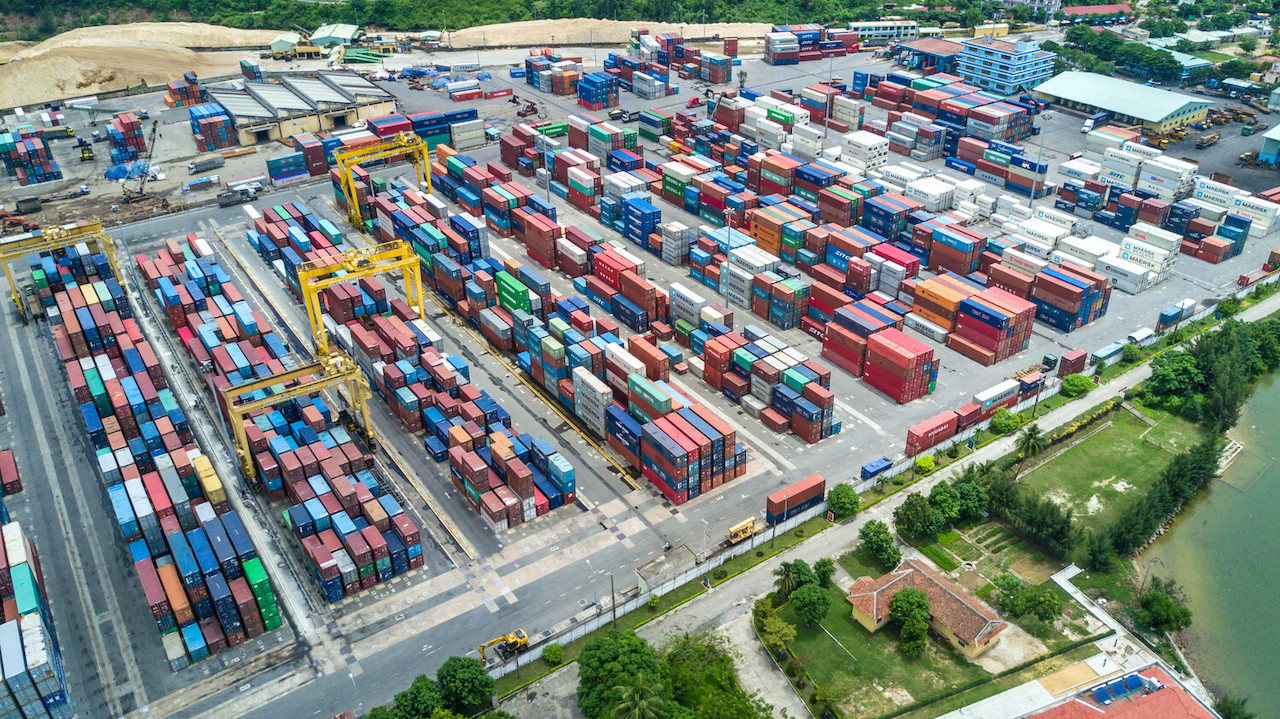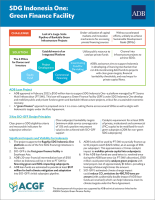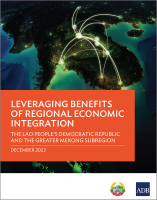
Trade and participation in global and regional value chains have been a major driving force behind Southeast Asia’s rapid growth and development. Photo credit: ADB.
In the wake of COVID-19, participation in global and regional value chains has never been more important as it fosters efficiency and competitiveness.
The expansion of global and regional value chains (GVCs and RVCs) has ushered in the rise of trade and rapid economic development in Southeast Asia. The region has managed to position itself as one of the most important regional hubs for GVCs, deriving immense economic benefits. However, GVC participation rates have declined due to the pandemic, which may be further impacted by the current geopolitical crisis.
Even though GVC and RVCs have served as conduits for the region’s growth, the spread of supply networks has come with environmental and social costs. For example, trade expansion has increased industrial production, which contributes to carbon emissions. It has also created social disparities, with much of the employment at the lower end of value chains being insecure and unprotected.
Moreover, recent shocks have exposed the fragilities of supply chains. Although efficiencies are achieved with global manufacturing networks, dependencies are created. A single disruption in any location can have far-reaching implications for production operations worldwide.
At the Southeast Asia Development Symposium 2022, a panel session on ASEAN participation in global and regional value chains discussed the risks, challenges, and opportunities facing future ASEAN participation in global production networks. The panel discussed emerging trends and key policy measures that could enhance the region’s strategic importance in GVCs and RVCs.
Growing forces of fragmentation amid heightened uncertainties
More than 2 years after the COVID-19 crisis, the supply chain turmoil remains unabated. Trade tensions, spurred by growing protectionism, are putting pressures on the global trading system. The push for self-sufficiency and reshoring was fueled by the US trade war with the People’s Republic of China, then reinforced by the pandemic-induced disruptions, and now intensified by Russian Federation’s invasion of Ukraine. As the simultaneous crises have highlighted the risks of reliance on foreign components and interconnected GVCs, the forces of fragmentation are threatening to erode the gains of open trade. According to the World Trade Organization (WTO), breaking the world economy into two trading blocs would curb global GDP by 5%. For Southeast Asia, a region highly integrated with the international marketplace, trade barriers emanating from the deglobalization trend could cause a significant reversal of its development progress.
With economic revival as the central agenda of governments in the wake of the pandemic, participation in GVCs and RVCs has never been more important as it fosters efficiency and competitiveness. As evidenced by the post-pandemic recoveries of many nations and regions, economic integration plays a crucial role in jumpstarting economies. In Asia, merchandise trade recovered faster than global trade in 2020 and 2021. ADB Economic Research and Regional Cooperation Department Director Cyn-Young Park cited findings from an ADB report, “trade growth in the region accelerated—even at double digit rates—reaching 19% by June 2021 before settling down to over 12% in August 2021.”
However, Park noted that soaring shipping costs and logistical bottlenecks are weighing on the region’s outlook. In addition, the geographical concentration of semiconductor chip manufacturing poses a substantial risk as it is an essential component for electronics, transportation, military systems, among many other applications.
Role of GVC and RVC in recovery
Although the supply chain woes will ease at some point, the problems have brought renewed efforts to enhance current systems for agility and resilience. Panelists stressed the need to diversify supply sources to reduce exposure to risks in GVCs, instead of pursuing inward-looking policies and succumbing to calls for disintegration. The discussion also emphasized the role of digitalization in strengthening visibility and transparency, which can optimize inventory management, streamline sourcing, and help instantaneously address chokepoints in production chains.
Digitalization can also deliver efficiencies through paperless trade and close the trade finance gap for micro, small, and medium-sized enterprises (MSMEs). Fintech solutions can help MSMEs engage in international trade by building their credit profile through electronic data.
Given that 75% of global installed capacity for semiconductor chips is concentrated, policymakers need to step up efforts to broaden the production networks and meet the growing demand by stimulating research and development and building a pipeline of talent for this industry.
At a time when shipping fees and inflation rates are at record levels, countries must capitalize on opportunities offered by free trade agreements, which help reduce costs for businesses. The Regional Comprehensive Economic Partnership (RCEP), for instance, will gradually reduce tariffs and liberalize nontariff barriers in goods and services, which account for approximately two-thirds of the total effects of the RCEP on income. According to an ADB study, RCEP will increase the income of member economies by 0.6% while adding $245 billion and 2.8 million jobs to the regional economy. The agreement also delivers a single set of rules with RCEP partners, making trade simpler and reducing compliance costs for exporters. Asian Trade Centre Executive Director Deborah Elms said, “Global agreements are much easier for small firms to use because it means that the rules apply consistently across a bigger setting.” She added, “For those small firms that are especially listening—if you are not taking advantage of RCEP and you have not even looked at this agreement—you are missing an opportunity to potentially save money, get more markets, or potentially both.”
Coherence between trade policies and sustainability pathways
Beyond economic benefits, multilateral trade agreements and frameworks can serve as environmental safeguards. In the European Union (EU), for example, there are initiatives shaping trade policies that are conducive to achieving decarbonization goals and environmental sustainability. The EU has been pursuing harmonization of green standards and ensuring trade activities are coherent with net-zero pathways through the proposed Carbon Border Adjustment Mechanism.
Since job creation is a central objective of GVCs and RVCs, it is critical to foster inclusive development through labor market policies. While trade liberalization has accelerated poverty reduction and generated significant employment in the region, it has also left some workers behind. Thus, countries need to invest in education and reskilling, as well as prioritize the promotion of decent work on their post-pandemic agenda. Emphasizing the need for quality jobs and fair incomes in the recovery phase, the International Labour Organization Senior Economist Christian Viegelahn noted, “We want many jobs to come back, of course, but then it is also about what types of jobs are these going to be.”
Finally, Southeast Asian countries need to collaborate for better alignment of their policies to enhance GVC and RVC participation and make trade sustainable and inclusive. As economies face new shocks, such as the food and energy crises, regional and global cooperation is required to keep GVCs and RVCs functioning. Collaboration was imperative to support the cross-border movement of essential goods at the height of COVID-19, and it is still very much needed today to assess the impact of trade measures on pressing issues of food and energy security, as well as the long-term threat of climate change.
Alluding to ASEAN’s regional cooperation and economic integration, SAIS Europe Director Michael Plummer underscored its strategic importance, “This is really key to ASEAN’s and frankly the entire region’s success story.” He added, “Deeper integration across ASEAN countries and together with Asia Pacific partners will make it more resilient.”

